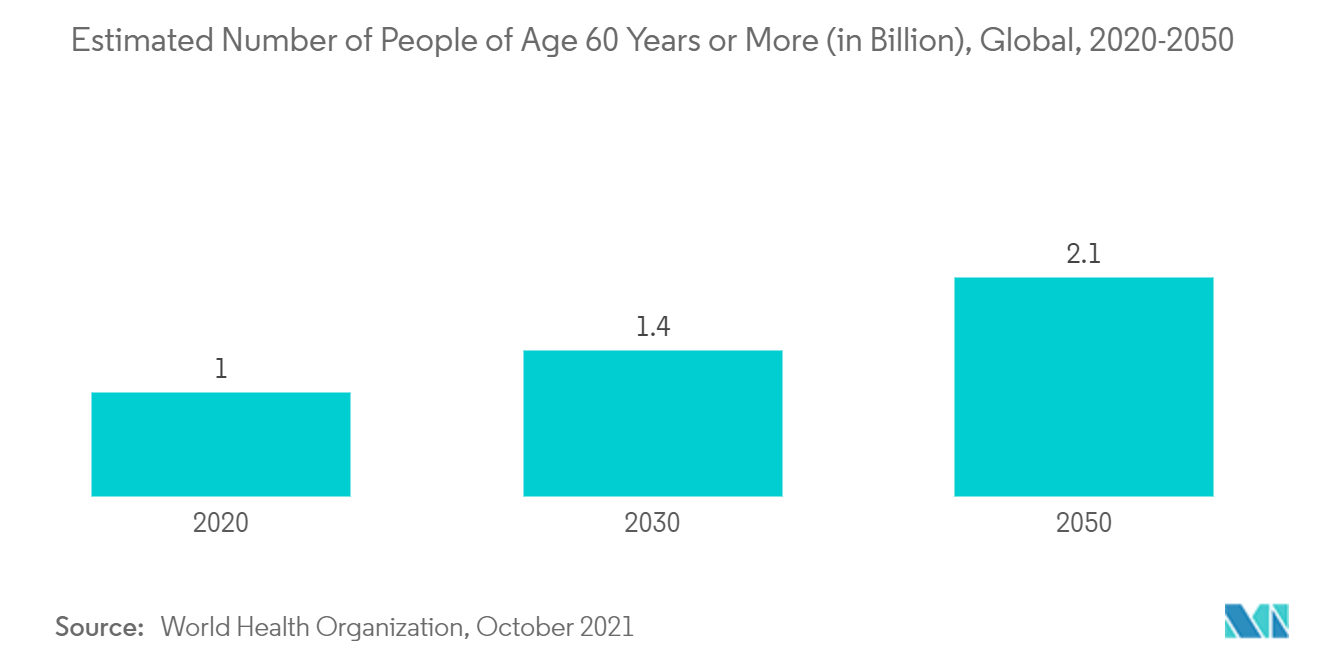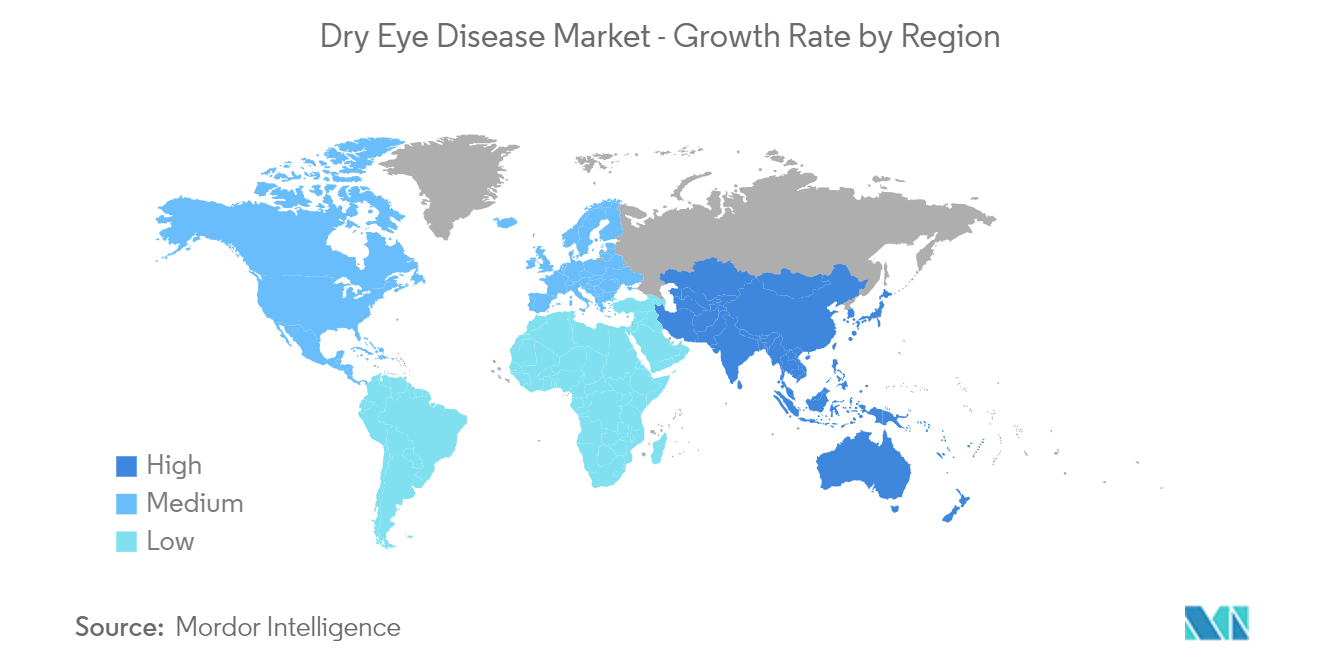Market Trends of Dry Eye Disease Industry
This section covers the major market trends shaping the Dry Eye Disease Market according to our research experts:
The Corticosteroid Drugs Segment is Expected to Hold a Major Market Share Over the Forecast Period
The Corticosteroids drug segment is expected to hold a significant market share owing to its huge demand for treating dry eye diseases, advantages, and rising product launches and approvals.
According to a research study published in Clinical Opthalmology Journal in February 2021, the mean age of the patients surveyed was 57.8 years, and the tear MMP-9 positivity was 73.0%. The patients were kept on topical corticosteroids treatment for one month which showed significant improvement of symptoms and signs in the patients, an improvement of up to 90.6%. This indicates the high prevalence of dry eye disease in the elderly population. Given the advantages of corticosteroids like anti-inflammatory benefits and providing symptom relief with short-term use, the segment is estimated to propel during the forecast period.
It has also been found that the elderly population is expected to grow in the coming years. This population group is more prone to eye-related disorders, which will ultimately drive the market in the future. Rising product approvals and new product launches are other factors anticipated to propel the demand for corticosteroids. For instance, in February 2021, the US FDA approved an abbreviated new drug application (ANDA) submitted by Akorn Operating Company LLC for loteprednol etabonate ophthalmic gel 0.5%, which is indicated for the treatment of post-operative inflammation and pain following ocular surgery.
Overall, this segment has the greatest share of anti-inflammatory medications in the market studied, and it is predicted to exhibit stable growth during the forecast period.

North America is Expected to Hold a Significant Share in the Market Over the Forecast Period
North America is expected to hold a major share of the dry eye disease market owing to the high prevalence of dry eye diseases and the easy availability of solutions in the region.
There are people of various ages found living in this multi-screen world. Computer or digital screen use may cause less blinking, which may contribute to symptoms of dry eye disease (DED), thereby, increasing the demand for better and more effective therapeutics against DED which is expected to fuel growth in the studied market in the North American region. For instance, an article published in Cureus Journal in July 2022 stated that the prevalence of DED has been estimated at 21% in Canada. Women who used eye cosmetics were substantially more likely to have DED than the general population, which suggests that using eye cosmetics is one of the risk factors for developing DED. The high prevalence of the disease is estimated to boost market growth in the region during the forecast period.
Additionally, drug launches are one of the key factors boosting the market's growth in the region. For instance, in January 2021, Kala Pharmaceuticals Inc. launched EYSUVIS (loteprednol etabonate ophthalmic suspension) 0.25% for the short-term (up to two weeks) treatment of the signs and symptoms of dry eye disease. EYSUVIS is now available in national and regional United States pharmaceutical distribution centers. Patients with a prescription can access EYSUVIS through their local retail pharmacies or home delivery.
Furthermore, in January 2022, Sun Pharma Canada Inc, a subsidiary of the Mumbai-based company Sun Pharmaceutical Industries Limited launched Cequa (cyclosporine ophthalmic solution 0.09 percent w/v), a calcineurin inhibitor immunomodulator. All these novel product launches may give the country a cutting edge in the market. Thus, due to the above-mentioned factors, the North American market for dye eye disease is expected to occupy a major share in the studied market and grow over the forecast period.


